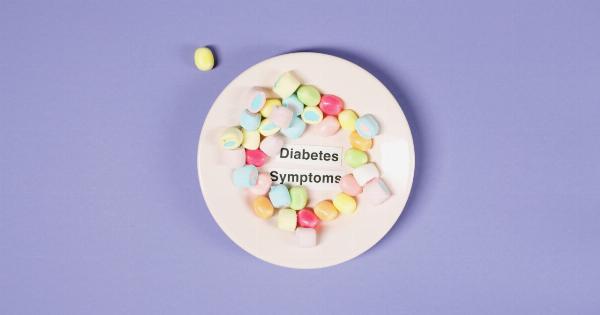Fatty liver disease, a condition that occurs when excessive fat accumulates in the liver, is a growing concern worldwide. Studies have shown that non-alcoholic fatty liver disease (NAFLD) is common among individuals with type 2 diabetes.
In fact, people with type 2 diabetes are twice as likely to develop NAFLD as those without diabetes. This article aims to examine the prevalence of fatty liver disease in individuals with type 2 diabetes and explore its potential impact on their health.
The Prevalence of Fatty Liver in Type 2 Diabetes
A study published in the Journal of Hepatology found that approximately 70% of people with type 2 diabetes have NAFLD. The study also found that the prevalence of NAFLD increased along with the severity of diabetes.
Another study conducted among a group of individuals with newly diagnosed type 2 diabetes found that 80% of them had fatty liver disease.
Risk Factors for Fatty Liver in Type 2 Diabetes
Several risk factors can contribute to the development of fatty liver disease in individuals with type 2 diabetes. These include:.
- Obesity
- High blood sugar levels
- Insulin resistance
- Elevated levels of triglycerides and LDL cholesterol
- Sedentary lifestyle
- Metabolic syndrome
Consequences of Fatty Liver in Type 2 Diabetes
Fatty liver disease can lead to several health complications in individuals with type 2 diabetes. Some of the potential consequences include:.
- Progressive liver damage
- Fibrosis and cirrhosis
- Increased risk of liver cancer
- Cardiovascular disease
- Kidney disease
- Increased risk of mortality
Diagnosing Fatty Liver in Type 2 Diabetes
Diagnosing fatty liver disease in individuals with type 2 diabetes can be challenging. Often, there are no apparent symptoms, and the liver enzyme levels may be normal.
In some cases, imaging tests, such as ultrasonography, computed tomography (CT), and magnetic resonance imaging (MRI), can help detect fatty infiltration in the liver. A liver biopsy may also be necessary to confirm the diagnosis and assess the severity of the disease.
Treatment and Prevention of Fatty Liver in Type 2 Diabetes
Treatment for fatty liver disease in individuals with type 2 diabetes involves managing the underlying risk factors, such as obesity, high blood sugar, and high cholesterol levels.
This may involve lifestyle changes, such as adjusting the diet, increasing physical activity, losing weight, and managing blood sugar levels. Medications that improve insulin sensitivity and lower cholesterol levels may also be prescribed through a doctor’s consultation.
For severe cases of fatty liver disease, medications such as metformin, pioglitazone, and vitamin E may be recommended.
Conclusion
The prevalence of fatty liver disease in individuals with type 2 diabetes is concerning. This condition can lead to several health complications, including cirrhosis, liver cancer, and cardiovascular disease.
Early diagnosis and management of fatty liver disease in individuals with type 2 diabetes are crucial to prevent further damage to the liver and reduce the risk of other health complications.



























